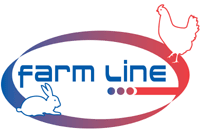

| Sponsors partenaires du MCF, informations et conditions par mail : CONTACT | |||||||
 |
|
 |
|||||
![]()
|
The Marans history (drawing by Marcel Simony) |
|
![]()
Where did this hen brought by the wild fowlers, come from before any crossing ? We will probably never know the answer. The selection was not very topical and this swam hew didn't really receive particular cares.
In the 12th
century, with his marriage with Henri of Plantagenet, Duke of
Anjou, who became Henri II of England, Aleanor of Aquitaine
brought in England a dowry of a part of the south west of France
: Poitou, Paintonge, Aunis, Perigord and Limousin.
The English domination lasted two centuries. So the English ships often stopped over at La Rochelle (near Marans) and unloaded the cocks which were survving from the cockfight at the time hightly prized by the railers to cheer up their sea isolation. In return, poultries which furnished fresh food and eggs were loaded.
The ruffs were naturally crossed with marsh
hens. The products which were born of these crossings had a more
stockly figure and already laid colored eggs. The fighting cocks,
with very varied colors, are at the origin of various present Marans varieties and are responsible for a proud
hearing, heavy figure and of the often quarrel somme character of these
cocks, if it
were not for the hens.
The seond half of the 19th
century was a decessive time for the evolution of the French
breeds often linked to the introduction of the Brahma and
Langshan.
Somme Langshans were imported by Mr Geoffrey
Saint Hilaire and Mr Foucault.
Mr Louis Rouille, famous amateur, was
fascinated then by the chinese breed which didn't possess yellow
feet (at this time it wasn't already little appreciated) and
whose fresh qualities weren't negligible and whose nice and
highly colored eggs didn't let people insensible. Louis Rouille
farmed a lot of Langshan hens in Fouras, situated at 12,43
miles south from La Rochelle. These subjects spread in the area
and it was by this way that the second crossing processus of the
Marans was instituted.
From that moment on, the main characteristic of the breed was well set : big red egg.
It was not the same however for the totally heterogenous plumage colors dating back from the ancestral origins of very numerous ruff-varieties.
|
D – The first Marans presentations |
|
In 1914, at the national exhibition in La
Rochelle, took place the first presentation of this poultry under
the name of "country hen".
In 1921, Mrs Rouse from Ille d'Elbe
seriously selected the future Marans for the size and the color
of its egg. then in order to make its plumage a little bit
uniform.
In 1928, Mrs Rousseau show in La Rochelle
a hen pen of homogenous cuckoo variety subjects and with big
extra reddish-brown eggs.
Fortunately for the future Marans, the
edition of the "Aviculteur Français" ("French
poultry farmer"), Mr Paul Waroquiez, visited this exhibition
and was closly interested in the unknown producer of nice eggs.
He published, in this respect, some articles in this magazine
notably on July 1st
1929 on the "Marans daise" breed origin.
In 1929, in order to protect the breed
qualities, a "Marans" section was created within the
Aunis Saintonge poultry farmer society in the Marans hen farm was
admitted in the local poultry exhibitions.
Mr Waroquiez suggested the creation of a
club. The
Marans Club Français
presided over by Mr Bouyer was created in September 1929
. During 1929, an eglish man, Lord Greenway, attracted by the
particular qualities of the Marans, brought at the Paris
exhibition some black, cuckoo, white variety subjects. After some
years, he concentrated his efforts on the selection of the cuckoo
variety exclusively. Due to the instability of the plumage of
this better variety, he subdivided it in three under varieties :
Two weeks later, he presented little weeker
size subjects reaching two hundred eggs a year according to him.
In 1930, the Marans was presented at the
exhibition in Liege, Paris, Lyon and Lille. During this same year,
the standard commission made up of Professeur Sebileau, of Mr
Waroquiez , Mr Sangalli and Mr Mace, visited about hundred farms
where were farmes the Marans.
From this observations should arise a standard which was studied at the end of
1930 by a comity gathered at the Aulnoie Manor. It was defined by
the commission of April 2nd
1931. it was published in various poultry farming magazines, it
was rectified by the général assembly on November 22nd
1931 and it was noted down in the general SCAF catalogue.
From that moment on, the Marans breed spread
almost over France and especially in the Nord Pas de Calais
department which sent eggs in England, and in the Seine, Oise.
Here are some facts concerning the Marans
representation at this time during the Paris exhibition :
In 1931 :
16 hens runs,
16 unities, 8 exhibitions,
3 varieties : silver cuckoo, white and
coppery-black.
In 1932 : 10 hens runs, 43 unities, 9 exhibitions,
6 varieties : white, ermined, golden cuckoo,
silver cuckoo, red, coppery-black.
In 1933 : 9 hens runs, 51 unities, all the varieties.
From 1934, the Marans knew a decline.
In 1936, in the Paris exhibition there were only 2
hens runs, 11 unities, and 2 exhibitions.
During the second world war, the germans
occuped the Marans area and the farmings were almost reduced to
nothing because the marketing has been made impossible.
In 1946, just after the war, the situation of the
Marans in its birthplace was the same as in 1929.
In 1950, a cooperative poultry farming center of
the Marans was created in Lagord in order to try to remidy it. (Faubourg
of La Rochelle) with the Marans club, the SCAF and the regional
poultry farming organisations.
This center was then moved in Dompierre sur
Mer (commune of Belle Croix) near La Rochelle.
It functionnated under the direction of the
departemental agricultural services.
It practised the selection by a hatched-nest,
the birth in individual pedigree, the systematic study of the
genetic factors and furnished eggs to be sit on and chicks to the
agricultual cooperative members.
In the first year of selection, the egg
average was of 168 eggs per hen.
In 1952, it nearly reached 200 eggs.
In 1953, the center possessed 150 silver-cuckoo
Marans and 150 white Marans hens.
In 1954, the project to have 500 to 1000 subjects
in 1954 never come into being. The center, which was at the time
managed by a person who found more advantages to farm ordinary
chicks than the Marans, collapsed.
In spite of the setbacks met the 50s and the
60s, the research and the selection of the Marans were carried
thanks to the MCF president, Mr Bachelier. So he took off on his
side Mr Priouzeau, in Marans, whose selector and setting
activities went on the two following decades.
With an impeccable sanitary state, a good conformation and with more than 200 eggs a year, the silver-cuckoo Marans that time didn't already lay as darker characterictic eggs as its ancestors did in the farm anymore.
… a decline
aspect
This period foreshadowed the silver-cuckoo
Marans decline.
The productivism was going to
destroy the inquestionnable qualities of the Marans on the one hand «because there is
a certain negative relationship between the produced egg quality
by a given age herd and the shell order »(as Bernard Sauveur
from the NIRA said),
and on the other hand "because the natural
possibility of the Marans to lay very big eggs represents a
certain handicap for an excellent hatching".
It was also at this time that in France a
lot of industrialists widely used the Marans subjects to
elaborate poultry founders, attending on the other hand to make
people forget this competing on hen which was of service to them.
About 1970, the supply of russian hens having a
phenotype close to the Marans contributed to give volume to the
coppery black variety but unfortunately at the expense of the egg,
plumage and tarsus color. The animals which were born of
these crossings needed to be eliminated.
Fortunately, some amateur went on, in
obscurity, taking an interest in the Marans and especially of the
coppery-black Marans which has already had the reputation to lay
the darker eggs.
The fancy which was born for the coppery-black
Marans went on but the standard incoherence notably in the
description of the plumage variety, represented a quite heavy
handicap.
Some farmers
have even specialized in the production of exhibition subjects,
diriding the lineage intending to produce the cocks to the
lineage meant to produce the pullets !
Others accepted the extreme heterogeneouness of the types and
plumage as a fatality. They solely dedicated themselves to the
extra reddish-brown egg production, annoyong by that all the
improvments of the racial characterictics of the Marans.
We have to wait
until the 1990s taht the race, supported by a hundred or so of
selector farmers spred all over France and Belgium, guided by the
work of a renewed anc actice MCF, finds agains progressively and
rapidly all its letters patent of nobility.
In 2000, the MCF
was made up of more than 400 members and delired more than 12000
official rings to its farmers.
©
(copyright) MCF 2001/2017
all rights reserved